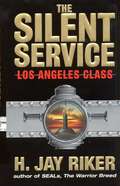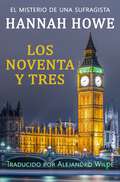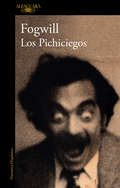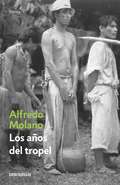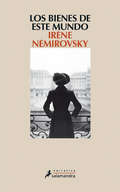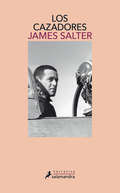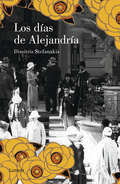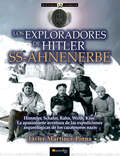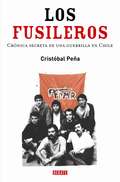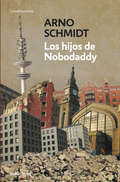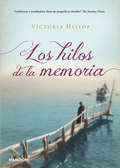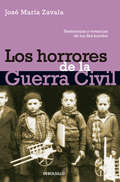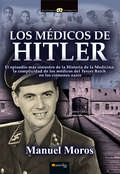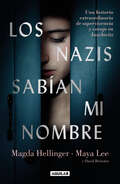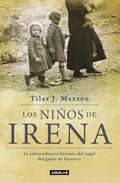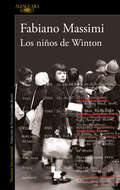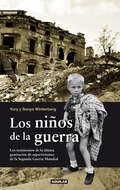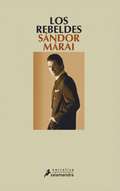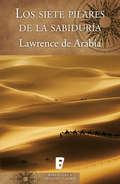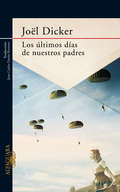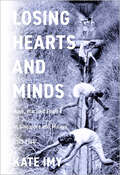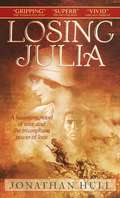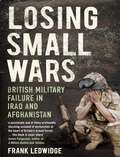- Table View
- List View
Los Angeles Class (Silent Service Series #2)
by H. Jay RikerMORE EXPLOSIVE UNDERSEA ACTION IN THE HEAT OF THE COLD WAR The year is 1987. Ronald Reagan is in the White House. A secret arms deal for hostages has just been exposed. The Middle East is fiery hot. The seas of the Russian Pacific are ice cold-and teeming with some of the most sophisticated weaponry humankind has ever devised. U.S. Navy SEALs are brilliantly proving their courage and extraordinary skill in a daring raid on Lebanon, a plan devised by Commander Frank Gordon. In acknowledgment of his first-rate strategic skills, Gordon is assigned to head up a bold undertaking into dangerous enemy waters. Placed in command of the Los Angeles Class submarine Pittsburgh - a realization of his life's greatest ambition - Gordon, along with his crew and a hand-picked team of SEALs will venture into the deadly, Russian-patrolled seas off the Kamchatka Peninsula. For intel has sent reports of an awesome new Soviet sub that no one in the West has ever seen before. And it's Gordon's mission to go up against the phantom boat-even at the risk of a shooting war. The SEALs are to go where the Pittsburgh cannot. But the game is more perilous than anyone has imagined. For the enemy has its own reasons for luring U.S. forces onto Russian turf. And there is a highly placed spy in the American ranks who may, even now, be leading a boat full of brave men to their doom.
Los Noventa y Tres: El misterio de una sufragista
by Hannah HoweUna novela que se desarrolla en 1918. Acusada de un asesinato, la socialité, sufragista, socióloga y profesora, Anna Richards, tiene que escapar. Al estar huyendo, se encuentra con un héroe de La Gran Guerra, el capitán Aubrey Howell, quien también se oculta de las autoridades. Pese a haber luchado con gran valentía, al capitán Howell se le busca por deserción. Él se negó a llevar a sus hombres a una misión suicida, por lo que se le envió a la corte marcial y fue sentenciado a muerte. Anna y Aubrey hacen equipo para salvar sus pellejos y resolver el misterio de Los Noventa y Tres.
Los años del tropel
by Alfredo Molano BravoCrónicas de Alfredo Molano, ganador del premio Simón Bolívar de periodismo 2016, donde retrata esa Colombia profunda, diversa y desconocida de las últimas décadas. Hay muchos estudios sobre la violencia en Colombia, pero pocos logran retratarla de forma tan vívida como Alfredo Molano. Esta obra está compuesta por siete relatos, unos de víctimas, otros de victimarios, a partir de los cuales nos adentramos en lo más complejo y humano de la guerra, del despojo, del sufrimiento que entraña la violencia y sus más profundas contradicciones. Es el retrato de un país que quedó irremediablemente dividido después del 9 de abril de 1948. La crítica ha dicho: "Este bogotano, nacido en 1944, ha dedicado sus días a recorrer el país, muchas veces a lomo de mula o a pie, y ha creado una obra única que, en más de 20 libros, cuenta la historia de una Colombia muchas veces ignorada: el país rural, campesino e indígena que ha sufrido los embates de la guerra". Revista Semana
Los bienes de este mundo
by Irène NémirovskyPublicada por entregas bajo el epígrafe «Obra inédita de una mujer joven» para eludir la prohibición de trabajar que el gobierno de Vichy imponía a los judíos, esta novela se editaría en 1947, cinco años después del asesinato de su autora en Auschwitz. La profunda discordancia entre la indiferente placidez de la vida burguesa y el dramático devenir de los acontecimientos -que sería el leitmotiv de su siguiente y última obra, la excepcional Suite francesa-, es el hilo conductor del que Némirovsky se sirve para narrar las vicisitudes de una familia burguesa del norte de Francia sobre el trasfondo de un período especialmente convulso de la historia europea que culmina con el desmoronamiento del orden social que siguió a la ocupación alemana. Hijo de los propietarios de una importante fábrica de papel desde hace generaciones, el joven Pierre Hardelot contraviene los deseos de sus padres renunciando a su compromiso de boda con Simone, la rica heredera que han escogido para él. Para mayor escarnio, Pierre se ha enamorado de Agnès, que no tiene dote y pertenece a una familia de la pequeña burguesía de reciente arraigo en el pueblo. Así, por medio de la rebelde actitud de Pierre y la decadencia de los Hardelot, Némirovsky ha escrito una persuasiva historia de amor, dulce y amarga por igual, en la que acompaña a los personajes con una mirada inclemente, aunque siempre teñida de afecto y comprensión. La crítica ha dicho...«Otra gran historia surgida de la sabia pluma de Irène Némirovsky. Para los amantes de la legendaria Suite francesa, [...] será una hermosa sorpresa.»Tuttolibri, La Stampa «Cada uno de los treinta capítulos podría ser un relato, pero cada uno conduce de forma inexorable al siguiente. Una novela llena de inteligencia y sensibilidad.»The Scotsman «Una extraordinaria predecesora de Suite francesa [...]. Némirovsky es única en su descripción de la población que, enfrentada al advenimiento de un cataclismo y a los horrores de la guerra, se niega a creerlo y se aferra a las comodidades cotidianas.»A.S. Byatt, The Guardian
Los cazadores
by James SalterLos cazadores, primera novela de Salter es un brillante anticipo de la ambición literaria del autor. Famoso por su prosa depurada, sus palabras precisas y sus silencios expresivos, que alcanzan elevadas cotas de fulgor en novelas imperecederas como Años luz o Todo lo que hay, James Salter es sin duda uno de los grandes escritores estadounidenses. Militar de profesión, abandonó pronto el ejército para dedicarse a su carrera literaria, que inició con Los cazadores, publicada por entregas en 1956 y revisada con escrupulosidad por el propio autor medio siglo después de su aparición. Una novela que alberga las vivencias de los tres años de Salter como piloto de combate en la guerra de Corea y contiene algunas de las páginas más eminentes jamás escritas sobre la experiencia de volar. A su llegada a la base aérea de Kimpo, el capitán Cleve Connell se hace la firme promesa de acceder a la élite de los pilotos de combate que han derribado más de cinco cazas coreanos. Sin embargo, en paralelo a la fiera contienda aérea se desarrolla un solapado conflicto en tierra entre los propios aviadores, mientras los sucesivos fracasos de Connell contrastan con los éxitos de sus colegas y ponen en entredicho su destreza y valor. Hasta que un día, suspendido en la inmensidad del cosmos sobre el río Yalu y consciente de su insignificancia, Connell comprende por fin que sólo alcanza el triunfo quien es capaz de identificar a su enemigo y vencerlo, sea cual sea su bando. Incluso si ese rival es uno mismo. Comparado con Antoine de Saint-Exupéry por las escenas de combate en los cielos, James Salter trasciende con creces el género bélico gracias a los símiles entre las luminosas descripciones del paisaje y la tensión emocional de los protagonistas; y convierte así esta travesía por el alma de Cleve Connell en una extraordinaria variación del deseo de gloria enfrentado al espejo de lamuerte.
Los días de Alejandría
by Dimitris StefanakisSaga familiar ambientada en Alejandría durante la primera parte del siglo XX. La novela recurre a la crónica familiar e histórica, al retrato íntimo y a la descripción de lugares, acontecimientos y personajes reales para trazar un mapa detallado de una ciudad donde todo era posible y de una época que ya fue y no volverá.
Los exploradores de Hitler: SS-AHNENERBE (Historia Incógnita)
by Javier Martínez-PinnaHimmler, Schafer, Rahn, Wirth, Kiss: La apasionante aventura de las expediciones arqueológicas de los cazatesoros nazis. Con Los exploradores de Hitler, Javier Martínez-Pinna vuelve a introducir al lector en la apasionante aventura de encontrar alguno de los tesoros ocultos más anhelados de nuestro pasado, esta vez siguiendo la pista a los investigadores nazis que durante años recorrieron el mundo al servicio del Tercer Reich. En su nuevo libro, se narra de manera ágil y amena la historia de las expediciones patrocinadas por la Ahnenerbe, una organización integrada dentro de las temibles SS, para encontrar las huellas perdidas de la raza aria, en las lejanas e inaccesibles cumbres del Tíbet, o la enigmática ciudad peruana de Tiahunaco. A través de sus páginas seguiremos el rastro de este extraño grupo de aventureros que se puso al servicio de un régimen que les encargó la búsqueda de los más poderosos objetos de culto de todas las religiones. Esta es su historia.
Los fusileros
by Cristóbal PeñaLa tarde del domingo 7 de septiembre de 1986, en el Cajón del Maipo, un comando del Frente Patriótico Manuel Rodríguez (FPMR) tendió una emboscada a la caravana que trasladaba al general Augusto Pinochet. La temeraria acción pasó a la historia y sus protagonistas - entre los que se contaban un escolar, un gásfiter, un bombero, un fisicoculturista, un cantautor, un ex seminarista de Schoenstatt y un estudiante de Cine y otro de Filosofía- cayeron en el olvido y corrieron suertes dispares. Narrada en clave de thriller político y policial, esta crónica acude al presente para reconstruir la historia de los veintiún fusileros que esa tarde de domingo desafiaron al régimen, convencidos de que no saldrían con vida.
Los hijos de Nobodaddy
by Arno SchmidtUna de las más cáusticas y certeras representaciones de los penosos efectos secundarios de la Segunda Guerra Mundial en la vida cotidiana. Cargado de un sarcasmo feroz y una aguda observación de la realidad, este tríptico disecciona la vida en la Alemania durante la era nazi y los años de la posguerra, hasta llegar a un futuro apocalíptico. Momentos de la vida de un fauno detalla las cuitas de un oficinista que escapa de la banalidad que lo rodea investigando las hazañas de un desertor de las guerras napoleónicas. El brezal de Brand se centra en el caos de la posguerra y sigue las andanzas de un escritor que, tras salir de un campo de prisioneros, se integra en la pequeña aldea donde vivió el romántico Fouqué en pos de una nueva vida. Finalmente, Espejos negros nos sitúa en un futuro donde la civilización ha sido prácticamente destruida; el narrador, solo durante años en ciudades llenas decadáveres, teme ser el último hombre en la Tierra hasta que un descubrimiento despierta en él nuevos temores. Arno Schmidt (1914-1979) es, junto con Heinrich Böll y Günter Grass, uno de los más importantes escritores de la Alemania de posguerra, quizá el más transgresor e innovador. Ocupa un lugar eminente en la historia de la sátira y la «comedia cruel», en la tradición de Rabelais, Swift y Joyce. Traducción de Luis Alberto Bixio, Fernando Aramburu, Guillermo Piro y Florian von Hoyer Reseña:«Un verdadero poeta.»Hermann Hesse
Los hilos de la memoria
by Victoria HislopUna historia de amor imperecedero en un mundo gobernado por el odio, la guerra y la segregación. Tesalónica, 1917. Al tiempo que Dimitri Komninos llega al mundo, un descomunal incendio arrasa la ciudad en la que cristianos, judíos y musulmanes conviven desde hace siglos. Cinco años más tarde, el ejército turco destroza el hogar de Katerina Sarafoglou en Asia Menor. Katerina pierde a su madre en el caos reinante y llega a Grecia atravesando el mar Egeo. Pronto su vida se verá íntimamente ligada a la de Dimitri, mientras las guerras, las revoluciones y el odio desgarran a los habitantes de la ciudad. ¿De qué tesoros y secretos del pasado son guardianes?¿Podrán transmitir su herencia, sus recuerdos, antes de que sea demasiado tarde?Ambos deberán descubrir la forma de desenredar los complicados hilos de la memoria. La crítica ha dicho...«Una narración inmejorable, como untapiz, donde cada hebra se cose en su lugar y así emergen las capas y la historia de las relaciones entre las personas presentes y pasadas.»Sunday Express «Ambiciosa y arrolladora, llena de magníficos detalles.»Sunday Times
Los horrores de la Guerra Civil
by José María ZavalaEste libro no dejará indiferente a nadie. A partir de más de doscientos testimonios y vivencias estremecedoras de los dos bandos, Los horrores de la Guerra Civil propone una lectura de la historia que atiende a aquellos que normalmente no tienen lugar en los libros. Sus protagonistas son personas con nombres y apellidos que no murieron en el frente, sino vilmente asesinadas en las retaguardias nacional y republicana.Los horrores de la trágica Guerra Civil, reunidos por primera vez en una impresionante obra, en la que el lector hallará también un completo diccionario de la represión, así como la biografía de los principales políticos y militares de aquel terrible enfrentamiento, y una extensa bibliografía y una rigurosa cronología de los acontecimientos más destacados.Un trabajo exhaustivo y ecuánime, en suma, que, dejando a un lado los intereses partidistas y las disputas de los historiadores por dirimir cuál de los dos bandos asesinó más, se ocupa de los auténticos protagonistas: las víctimas.
Los horrores de la Guerra Civil: Testimonios y vivencias de los dos bandos
by José María ZavalaEl lado oscuro y menos conocido de la Guerra Civil, a través de diversos testimonios de los horrores y excesos cometidos por ambos bandos en la retaguardia. Este libro no dejará indiferente a nadie. A partir de más de doscientos testimonios y vivencias estremecedoras de los dos bandos, Los horrores de la Guerra Civil propone una lectura de la historia que atiende a aquellos que normalmente no tienen lugar en los libros. Sus protagonistas son personas con nombres y apellidos que no murieron en el frente, sino vilmente asesinadas en las retaguardias nacional y republicana. Los horrores de la trágica Guerra Civil, reunidos por primera vez en una impresionante obra, en la que el lector hallará también un completo diccionario de la represión, así como la biografía de los principales políticos y militares de aquel terrible enfrentamiento, y una extensa bibliografía y una rigurosa cronología de los acontecimientos más destacados. Un trabajo exhaustivo y ecuánime, en suma, que, dejando a un lado los intereses partidistas y las disputas de los historiadores por dirimir cuál de los dos bandos asesinó más, se ocupa de los auténticos protagonistas: las víctimas. Reseña:«Una obra original y de gran envergadura, recomendable por su objetividad y ausencia de espíritu partidista.»Stanley G. Payne
Los médicos de Hitler (Historia Incógnita)
by Manuel Moros PeñaLos crímenes médicos del Tercer Reich y su política de creación de una superraza aria que provocó eliminaciones en masa en campos de exterminio, delirantes ensayos clínicos y atroces experimentos médicos. Una novedosa visión del nazismo como “biología aplicada” que analiza de forma detallada las circunstancias que concurrieron para que un importante sector de la medicina alemana jugara un papel crucial en la política de exterminio del régimen. Los médicos de Hitler analiza de forma detallada y rigurosa cómo el programa de eliminación de niños discapacitados y enfermos mentales, ideado, coordinado y ejecutado por médicos desembocó en el asesinato en masa de los campos de exterminio y en los atroces experimentos médicos llevados a cabo por profesionales de renombre. Un exhaustivo análisis del papel crucial desempeñado por gran parte del colectivo médico en su política de exterminio y de creación de una superraza aria. Un recorrido por todos los aspectos de la biopolítica de exterminio de Hitler, desde los comienzos del movimiento eugenésico en Alemania, la publicación de Mein Kampf, los programas de esterilización forzada, el Aktion 4, las inoculaciones de malaria, los experimentos con gas mostaza,... hasta los procesos judiciales que frenaron este tipo de prácticas.
Los nazis sabían mi nombre
by David Brewster Maya Lee Magda HelllingerUna historia extraordinaria de supervivencia y coraje en Auschwitz Marzo de 1942, una joven maestra de jardín de niños llamada Magda Hellinger, procedente de Eslovaquia, fue deportada al campo de concentración de Auschwitz junto con casi mil mujeres más, en el que sería uno de los primeros arribos de mujeres judías al terrible campo nazi. En muy poco tiempo la brutalidad del nazismo se volvió el principio de realidad en el que Magda se movía. Por si fuera poco, las SS descubrieron que al poner a ciertos prisioneros a cargo de los bloques donde cientos de personas se alojaban les permitía trasladar sus responsabilidades hacia estos individuos que, si no llevaban a cabo sus labores administrativas de la manera adecuada, simplemente eran eliminados. Magda fue una de esas prisioneras seleccionadas para hacerse cargo del infame Bloque 10, en el que personal médico alemán experimentaba con los reclusos. En estas memorias, Magda nos relata cómo caminó al filo de la navaja durante varios años: salvar la mayor cantidad de vidas mientras evitaba las sospechas de las SS y corría el riesgo de ser ejecutada. A través de su fuerza interior y su instinto de supervivencia, pudo superar el horror y la crueldad de Auschwitz y construir relaciones de amistad con las mujeres bajo su vigilancia. La historia de Magda es un testimonio de cómo el espíritu humano puede salir adelante aun en las condiciones más deshumanizantes.
Los niños de Irena: La extraordinaria historia del ángel del gueto de Varsovia
by Tilar J. MazzeoEl testimonio único de la heroína del Holocausto: Irena Sendler. Irena Sendler, "el ángel del gueto de Varsovia", fue una enfermera y trabajadora social polaca que, en la Segunda Guerra Mundial, salvó a más de dos mil quinientos niños judíos condenados a ser víctimas del Holocausto. Llegó a ser candidata al Premio Nobel de la Paz, fue reconocida como Justa entre las naciones y se le otorgó la más alta distinción civil de Polonia: la Orden del Águila Blanca. Esta novela cuenta cómo llegó a convertirse en esa heroína, la historia de la joven y hermosa mujer que tuvo que hacer frente a grandes riesgos, a pesar de los cuales no dudó en poner en peligro su vida para ayudar a salvar las vidas de miles de pequeños. Muchos de aquellos niños están vivos y cuentan su parte de la historia en primera persona. El relato de Irena es una historia de valentía, pero también de un amor imposible y, por supuesto, de una época histórica tan terrible como real: la Segunda Guerra Mundial. Reseñas: "Los niños de Irena teje en una fascinante historia el relato de una ciudad devastada, la depravación nazi y el extraordinario valor físico y moral de aquellos que decidieron responder a la inhumanidad con compasión." Chaya Deitsch, autora de Here and There: Leaving Hasidism, Keeping My Family "Un relato fundamental, aunque aterrador, de la historia del Holocausto que hasta ahora era poco conocido: el de cómo miles de niños fueron rescatados del gueto de Varsovia por una mujer polaca con mucho valor y una extraordinaria calidad moral." Joseph Kanon, autor de Leaving Berlin "Mazzeo relata un rayo de esperanza en tiempos de desesperación en esta biografía conmovedora de una mujer que se negó a darse por vencida." Kirkus Reviews "Si bien esta no es la primera biografía de Irena Sendler, su concisión y legibilidad presentarán a muchos lectores a una mujer realmente valiente y notable, quien inició y encabezó "un gran esfuerzo colectivo de decencia"." Publishers Weekly
Los niños de Winton
by Fabiano MassimiUn thriller trepidante sobre el hombre que salvó a más de seiscientos niños checoeslovacos del nazismo, por el premiado autor de El ángel de Múnich. «Un fresco intrigante que recorre una de las páginas más oscuras de la historia».Patrizia Violi, La Lettura Praga, 1938. La sombra de Hitler se cierne sobre Checoslovaquia. Unos voluntarios británicos liderados por Nicholas Winton, un joven agente de bolsa, se vuelcan en sacar del país en tren y en avión a los niños judíos para llevarlos a Reino Unido. Solo cuentan con la ayuda de Petra, su guía local, que se une a sus actividades clandestinas. En el centro de su empresa se encuentra la misteriosa Niña de la Sal, que todas las noches vende bolsitas de este codiciado ingrediente en las calles de la ciudad. Nadie conoce su nombre ni cómo consigue el preciado bien, pero corre un grave peligro: un gigantesco oficial alemán la está buscando. Una poderosa novela basada en unos hechos reales nunca desvelados hasta 1988, cuando un documental de la BBC hizo pública la lista de los niños, convirtiendo a Nicholas Winton en un héroe y en candidato a Premio Nobel de la Paz. Massimi nos regala un viaje entre la historia y la ficción que ilumina una de las partes más tenebrosas de nuestro pasado. La crítica ha dicho:«Un escritor que conjuga la erudición de un historiador, las fuentes de un periodista y la capacidad narrativa de un novelista».Juan Losa, Público «Una narración delicada [...] dentro de una Praga onírica».Il Libraio «Sin duda, en la mezcla de historia e intriga Massimi demuestra excepcionales dotes».El Imparcial«La solvente irrupción de Massimi viene a nutrir un subgénero propio de la novela negra, el nazi crime».El Periódico de España «Preciso, imaginativo y brillante».Donato Carrisi, Corriere della Sera «Un sutil hilo conductor que une Massimi a las novelas de Kafka y que, en sus relatos de la vida y de los sentimientos durante la formación del pangermanismo, vuelve a revivir a un pueblo muerto y a sus verdugos, recordándonos que no es la gente la que escribe la historia, sino quien sabe controlarla».Roma «Son las pequeñashistorias las que hacen grande la historia, es la narración apasionada la que mantiene vivo el pasado».Domani «Un thriller que podría haber escrito Ken Follett».Il Venerdì (sobre El ángel de Múnich)
Los niños de la guerra
by Yury Winterberg Sonya WinterbergLos testimonios de la última generación de supervivientes de la Segunda Guerra mundial. Las vivencias traumáticas que no se superan se transmiten de padres a hijos. El sufrimiento provocado por la Segunda Guerra Mundial sigue removiendo antiguas heridas y el miedo experimentado se transfiere como una vivencia grabada a fuego en la memoria de todos aquellos implicados de algún modo en ella, generación tras generación. Los niños ven el mundo con distintos ojos que los adultos; también la guerra. No aciertan a entender la verdadera naturaleza de las desgracias que trae consigo un conflicto bélico, las interpretan a su manera y desde una perspectiva que responde solo a la verdad y que por eso resulta aterradora. En este libro no solo hablan los niños de la guerra alemanes, sino también los de Polonia, los de Francia, los de Inglaterra y los de la antigua Unión Soviética. La visión de cada uno de estos pequeños y la fuerza de sus testimonios construyen un nuevo escenario, una nueva perspectiva sobre el panorama europeo de aquellos años, sobre lo que significó ser niño en la guerra. Los padres de Yury y Sonia Winterberg conservan intactos sus recuerdos de infancia, la ignominia de algunas circunstancias, el desprecio de los nazis, el miedo... todavía hoy. En Los niños de la guerra recogen con un estilo periodístico lleno de claridad y franqueza 52 testimonios que describen el conflicto desde el principio hasta el final y gracias a la fuerza de las historias, de las cartas de los padres a los hijos momentos antes de ser fusilados, de las fotografías de los álbumes familiares y de los dibujos infantiles obtenemos el mapa emocional, la intrahistoria, del que sin duda ha sido uno de los acontecimientos bélicos de mayor impacto del siglo XX.
Los rebeldes (Ciclo de los Garren #Volumen 1)
by Sándor MáraiSándor Márai publicó esta novela cuando tenía treinta años y acababa de regresar a Hungría. Aunque ya era conocido como escritor de talento, Los rebeldes causó un gran impacto y acabó de consagrar a su autor, que iniciaba entonces uno de sus períodos creativos más intensos y fecundos. Apenas unos meses antes del final de la Primera Guerra Mundial, cuatro jóvenes acaban sus estudios y se enfrentan al último verano de la adolescencia. En cuestión de semanas serán llamados a filas y enviados al frente, un frente del cual solo llegan noticias nefastas. Así, unidos por su aversión a lo que promete ofrecerles la madurez, Tibor, Ábel, Erno y Béla crean un universo particular y juegan a desafiar todas las reglas: beben y fuman en exceso, juegan a las cartas, se inventan extravagantes historias, cometen pequeños hurtos... Ante la ausencia de padres, tíos y hermanos mayores, realizan su propio aprendizajede la vida libres del control familiar, hasta que la aparición de un improvisado mentor, un avieso actor que está de paso en la ciudad, hará que sus juegos, y sus vidas, se precipiten por caminos insospechados que los llevarán hacia un dramático desenlace.
Los siete pilares de la sabiduría
by T.E. Lawrence (Lawrence de Arabia)La crónica personal de un aventurero de comienzos del siglo XX, T. E. Lawrence: un miembro del Gobierno británico que termina convirtiéndose en un héroe de la resistencia árabe. En los preludios de la Primera Guerra Mundial, en pleno apogeo del colonialismo europeo, un agente del Gobierno británico se interna en la península arábiga con la finalidad de subyugar una inminente rebelión anticolonial. El emisario es cuestión recorre, bajo un sol abrasador, amplias regiones desérticas. Trata con los enemigos del Imperio Británico, conoce sus constumbres y se gana su confianza. Se convierte en uno de ellos... y actúa de forma subrepticia a favor de los intereses de la metrópli, aunque le repugna tanto ejercer ese papel que acaba simpatizando con la causa árabe.
Los siete pilares de la sabiduría
by T.e. Lawrence de ArabiaEsta es la crónica personal de un aventurero de comienzos del siglo XX, T. E. Lawrence: un lacayo del Gobierno británico que termina convirtiéndose en un héroe de la resistencia árabe. En los preludios de la Primera Guerra Mundial, en pleno apogeo del colonialismo europeo, un agente del Gobierno británico se interna en la península Arábiga con la finalidad de yugular una inminente rebelión anticolonial. El emisario es cuestión recorre, bajo un sol abrasador, amplias regiones desérticas. Trata con los enemigos del Imperio Británico, conoce sus constumbres y se gana su confianza. Se convierte en uno de ellos... y actúa de forma subrepticia a favor de los intereses de la metrópli, aunque le repugna tanto ejercer ese papel que acaba simpatizando con la causa árabe.
Los ultimos dias de nuestros padres
by Joël DickerLa primera novela del «fenómeno planetario» (Babelia) Joël Dicker, «el suizo que resucita las librerías» (El País Semanal), el «irritante niño prodigio literario» (The New York Times), ganadora del Premio de los Escritores Ginebrinos. En 1940 Winston Churchill tiene una idea que cambiará el curso de la guerra: crear una nueva sección de los servicios secretos, el Special Operations Executive (SOE), para llevar a cabo acciones de sabotaje desde el interior de las líneas enemigas. Unos meses más tarde, el joven Paul-Émile deja París rumbo a Londres con la esperanza de unirse a la Resistencia. El SOE no tarda en llamarlo a sus filas, junto a un grupo de jóvenes compañeros. Tras un entrenamiento brutal, los pocos elegidos conocerán el amor, el miedo y la amistad, y serán enviados en misión a la Francia ocupada. Pero el contraespionaje alemán ya ha sido alertado. Un jovencísimo Joël Dicker, que luego deslumbrará a más de dos millones de lectores con La verdad sobre el caso Harry Quebert, aborda un hecho de la Segunda Guerra Mundial que fue mantenido en secreto durante años, y demuestra, en esta novela ganadora del Premio de los Escritores Ginebrinos, su talento para crear una historia y unos personajes inolvidables. Reseña:«Una lectura envolvente. Dicker no solo demuestra conocer a fondo el tema sino que se compromete con los personajes, se vuelve lírico. Transmite con fuerza el poder reconfortante de ese "nosotros" que surge en las horas críticas de la historia.»Emmanuel Gehrig, Le Temps Reseñas a La verdad sobre el caso Harry Quebert:«Como si Norman Mailer hubiera sido acusado de asesinato y Truman Capote hubiera colaborado para contarlo todo... Pero sospecho que Dicker es más divertido.»Chelsea Cain, The New York Times «Estamos ante el gran thriller que todo el mundo esperaba desde Millenium de Larsson, ante una voz napoleónica, que no escribe, boxea... Una novela que no es una novela, es una batalla. Como todo gran libro que se precie.»Laura Fernández, El Cultural de El Mundo «Llega el fenómeno Dicker... El sucesor de Stieg Larsson y E.L. James... Entretenimiento en vena... Terriblemente adictivo.»Antonio Lozano, La Vanguardia «Si usted mete las narices en esta gran novela, está perdido: tendrá que seguir hasta el final. Se sentirá manipulado, desorientado, asombrado, irritado y apasionado por una historia con muchas sorpresas y falsas pistas.»Bernard Pivot (de la Academia Goncourt), Le Journal du dimanche
Losing Hearts and Minds: Race, War, and Empire in Singapore and Malaya, 1915–1960 (Stanford British Histories)
by Kate ImyLosing Hearts and Minds explores the loss of British power and prestige in colonial Singapore and Malaya from the First World War to the Malayan Emergency. During this period, British leaders relied on a growing number of Asian, European and Eurasian allies and servicepeople, including servants, police, soldiers, and medical professionals, to maintain their empire. At the same time, British institutions and leaders continued to use racial and gender violence to wage war. As a result, those colonial subjects closest to British power frequently experienced the limits of belonging and the broken promises of imperial inclusion, hastening the end of British rule in Southeast Asia. From the World Wars to the Cold War, European, Indigenous, Chinese, Malay, and Indian civilians resisted or collaborated with British and Commonwealth soldiers, rebellious Indian troops, invading Japanese combatants, and communists. Historian Kate Imy tells the story of how Singapore and Malaya became sites of some of the most impactful military and anti-colonial conflicts of the twentieth century, where British military leaders repeatedly tried—but largely failed—to win the "hearts and minds" of colonial subjects.
Losing Julia
by Jonathan HullFROM THE BACK COVER: Patrick Delaney was just a boy when he marched off to war in 1918. But on the stark battlefields of France, amid the horror and the chaos, Patrick forged a bond that would shape the course of his life. Daniel was Patrick's best friend, his comrade in arms. But it was Daniel's lover, Julia, who would change Patrick forever. Julia's letters, shared by Daniel in the muddy trenches, touched Patrick in ways he never could have expected. But years would pass before he finally met her at a war memorial in France. There on a field still scarred by battle, Patrick closed his eyes in silent prayer and opened them to the woman he had never seen but always love, Julia. After a brief, passionate encounter. Patrick made a fateful choice and Julia slipped away, perhaps never to return. It is just the beginning of an astonishing story that will span almost a century. A story of memory and desire, history and destiny and of the people who slip from our grasp. Only to hold us forever.
Losing Small Wars: British Military Failure in Iraq and Afghanistan
by Frank LedwidgePartly on the strength of their apparent success in insurgencies such as Malaya and Northern Ireland, the British armed forces have long been perceived as world class, if not world beating. However, their recent performance in Iraq and Afghanistan is widely seen as--at best--disappointing; under British control Basra degenerated into a lawless city riven with internecine violence, while tactical mistakes and strategic incompetence in Helmand Province resulted in heavy civilian and military casualties and a climate of violence and insecurity. In both cases the British were eventually and humiliatingly bailed out by the US army. In this thoughtful and compellingly readable book, Frank Ledwidge examines the British involvement in Iraq and Afghanistan, asking how and why it went so wrong. With the aid of copious research, interviews with senior officers, and his own personal experiences, he looks in detail at the failures of strategic thinking and culture that led to defeat in Britain's latest "small wars. " This is an eye-opening analysis of the causes of military failure, and its enormous costs.
